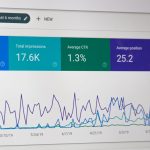Virtual Private Networks (VPNs) play a vital role in today’s digital landscape, enabling secure and private communication over public networks. However, as more enterprises rely on VPNs to protect sensitive data transmissions, the potential for misuse or malicious activity has grown. Detecting unusual VPN traffic manually is not only time-consuming but also prone to oversight. This is where Artificial Intelligence (AI) steps in — offering a more efficient and sophisticated approach to monitoring VPN traffic for anomalies.
Understanding VPN Traffic Anomalies
VPN traffic anomalies refer to patterns of activity that deviate from regular usage behavior. This could include:
- Unusual login attempts from unfamiliar locations
- Sudden spikes in data transfer
- Access to restricted internal resources
- Activities during non-working hours
Such behaviors often indicate potential threats like credential theft, malware activity, or unauthorized access. Traditional rule-based monitoring may fail to catch subtle or evolving anomalies—this is where AI excels.
The Role of AI in VPN Traffic Monitoring
AI-driven systems are designed to learn and evolve. They can process large volumes of VPN traffic data in real time, identifying complex patterns and flagging unusual behavior that might go unnoticed by human analysts or conventional software. These systems primarily rely on machine learning algorithms to detect deviations from established baselines.
For instance, a company might typically have employees login from one geographic region during business hours. If AI detects access from a foreign country at an unusual hour, it may raise an automated alert for further inspection.

Benefits of AI in VPN Traffic Analysis
Deploying AI for VPN monitoring offers a wide array of advantages:
- Real-time detection: AI tools can analyze data streams instantly, which helps in detecting threats as they occur.
- Reduced false positives: Machine learning systems improve over time, distinguishing normal variances in traffic from actual threats.
- Scalability: AI can scale effortlessly with growing VPN usage, adapting to network expansions and diversified traffic flows.
- Contextual analysis: Advanced AI systems also consider user behavior, login times, data sensitivity, and other contextual elements, enhancing the accuracy of threat detection.
Use Cases and Implementation
Major organizations are now integrating AI into their Security Information and Event Management (SIEM) tools to monitor and analyze network traffic, including VPN data. These AI systems absorb historical data to understand what “normal” looks like for an organization, which helps them detect anything that strays from the norm.
Popular applications include:
- User Behavior Analytics (UBA): Learning the regular patterns of users and highlighting suspicious activities.
- Geolocation tracking: Correlating IP addresses and login times to spot anomalies in user location or timing.
- Data flow mapping: Monitoring the amount and direction of traffic to identify data exfiltration attempts.

Challenges in AI Monitoring
While AI offers immense potential, it does come with certain challenges:
- Requires comprehensive data for training and analysis
- Needs continuous monitoring and updates to remain effective
- Potential for adversaries to develop techniques to evade AI detection
However, with proper implementation and regular tuning, AI systems can vastly improve the security posture of any organization that relies on VPNs for operational connectivity.
Conclusion
The increasing complexity and volume of VPN traffic demand intelligent solutions for monitoring and threat detection. AI not only enhances visibility over VPN usage but also provides timely insights to prevent breaches, maintain compliance, and secure organizational data. As cyber threats evolve, so must the tools used to fight them—AI stands at the forefront of this new digital defense.
FAQ
- Q: What types of anomalies can AI detect in VPN traffic?
A: AI can detect anomalies such as unusual login locations, odd login hours, excessive data transfers, and unauthorized access attempts within VPN traffic. - Q: Is AI better than traditional methods for anomaly detection?
A: Yes, AI can analyze large amounts of data in real time and adapt to changing traffic patterns, making it more effective and less prone to false negatives than traditional rule-based systems. - Q: Does implementing AI in VPN monitoring require significant infrastructure?
A: Modern AI tools can be integrated with existing network monitoring systems, though substantial data collection and processing capabilities are needed for optimal performance. - Q: Can AI systems be tricked or bypassed by sophisticated attackers?
A: While AI greatly enhances detection capabilities, no system is foolproof. Threat actors may attempt to mimic legitimate behavior to bypass AI, which is why ongoing training and tuning are essential. - Q: How does AI improve over time in anomaly detection?
A: AI systems use machine learning to adapt to new patterns. By learning from feedback loops and past incidents, they become more accurate in identifying what constitutes an anomaly.



